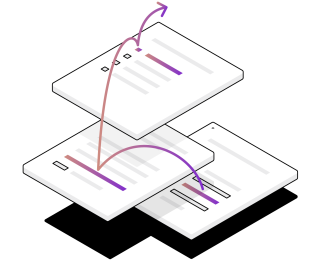

Unlocking CER Benefits Through Flexible Trading rule change - final determination
The final determination for the Unlocking CER Benefits Through Flexible Trading rule change was released on 15 August 2024.
We discussed the Unlocking CER Benefits Through Flexible Trading Rule Change draft determination in our March article.
In this article, we highlight some of the key changes that may be of interest to our stakeholders, while noting that it is not intended to provide a comprehensive summary of the rule change. For more information, we recommend reviewing the AEMC’s final determination.
The main elements of the AEMC’s final determination include:
- Establishing an enduring framework for flexible trading with multiple energy service providers at large customers’ premises
- Creating opportunities to optimise CER flexibility for small customers (households and small businesses)
- Introducing new meter types to enable measurement of energy flows using in-built technology.
The rule change introduces a series of changes designed to integrate consumer energy resources
- ‘Secondary settlement points’ for both large customers and small customers – additional metering installations installed by a Financially Responsible Market Participant
A FRMP is responsible for the settlement of any purchase of energy from the NEM or generation of energy to the NEM through that connection point.(FRMP) behind a point of connection to the National Electricity MarketThe National Electricity Market (NEM) spans Australia’s eastern and south-eastern coasts and comprises of five interconnected states that also act as price regions: Queensland, New South Wales (including the Australian Capital Territory), South Australia, Victoria, and Tasmania. Western Australia and the Northern Territory are not connected to the NEM, primarily due to the distance between networks. The NEM’s transmission network carries power from electricity generators to large industrial energy users and local electricity distributors across the five regions. These assets are owned and operated by state governments, or private businesses.(NEM)1.
- New meter types designed to allow for non-traditional connection types and technologies2. Type 8 metering is for use at secondary settlement points, with a type 8A metering installation designed for use at large customer secondary settlement points and a type 8B metering installation for small customers. Type 9 metering has been created to allow for street furniture connections such as smart streetlighting systems, kerbside electric vehicle charging points, and some existing unmetered connections where traditional metering cannot be practically accommodated.
IMPORTANT DATES |
30 September 2025: AEMO procedure changes finalised |
| 31 May 2026: Streetlight and EV charger in-built metering arrangements implemented | |
| 1 November 2026: Full rule implementation |
Changes from the draft determination
The final determination sees some changes to the draft National Electricity Rules
While the characteristics of Type 8 meters remain the same, these meters will be distinguished as 8A meters for large customer secondary settlement points and 8B meters for small customers’ premises. These descriptions will provide clarity within procedures and guidelines.
A new role, called the NMI Service Provider, will be introduced with the suite of rule changes. NMI Service Providers will be responsible for establishing and maintaining National Metering Identifiers (NMI) for secondary settlement points. In the draft rule, this role fell to Distribution Network
The final determination also clarifies some consumer protections, including regarding de-energisation. In response to feedback from the Energy & Water Ombudsmen, the rule change includes provisions that permit de-energisation to a secondary settlement point only in situations where de-energisation is permitted to the entire premises – that is, retailers may not de-energise only a secondary settlement point.
If you have any questions about the final determination for the Unlocking CER Benefits Through Flexible Trading rule change and how it might apply to your project, please contact us or submit an enquiry to our Innovation Enquiry Service.
Other upcoming changes
The new rules implemented under this rule change will assist in enabling reforms across the regulatory framework proposed under the National CER Roadmap. The National CER Roadmap outlines priority reforms to harness the full potential of CER. The roadmap was released in July 2024 and was developed by the CER Working Group.
The Roadmap refers to the Unlocking CER Benefits Through Flexible Trading rule change alongside a series of other changes to create a foundation for greater CER integration and future innovations.
A directions paper has been published for the Accelerating smart meter deployment rule change, which seeks further feedback on the draft determination released by the AEMC in April. The draft rule proposes the introduction of reforms designed to reduce barriers to the installation of smart meters while maintaining consumer protections. Submissions to this directions paper are due 12 September 2024.
The AEMC recently initiated the Electricity pricing for a consumer-driven future review, which will examine market arrangements for consumers in a network increasingly reliant on consumer resources, as well as the roles of various market participants in the evolving energy industry.
In July, the AEMC released the draft determination for the Integrating price-responsive resources into the NEM rule change. The focus of this rule change is to provide a framework to incorporate unscheduled and price-responsive CER (such as virtual power plants and community batteries) into the National Electricity Market
In addition to these upcoming rule changes, a recently submitted rule change request seeks to enable consumers to access their power data in real time. The request, which was submitted by Energy Consumers Australia, has not yet been initiated by the AEMC.
1 Secondary settlement points cannot be established at premises that are the location of a scheduled plant, are within a regulated stand-alone power system, and they may not be established in place of a child connection point in an embedded network
2 National Measurement Institute pattern approval will still be required to use in-built metering technology.
